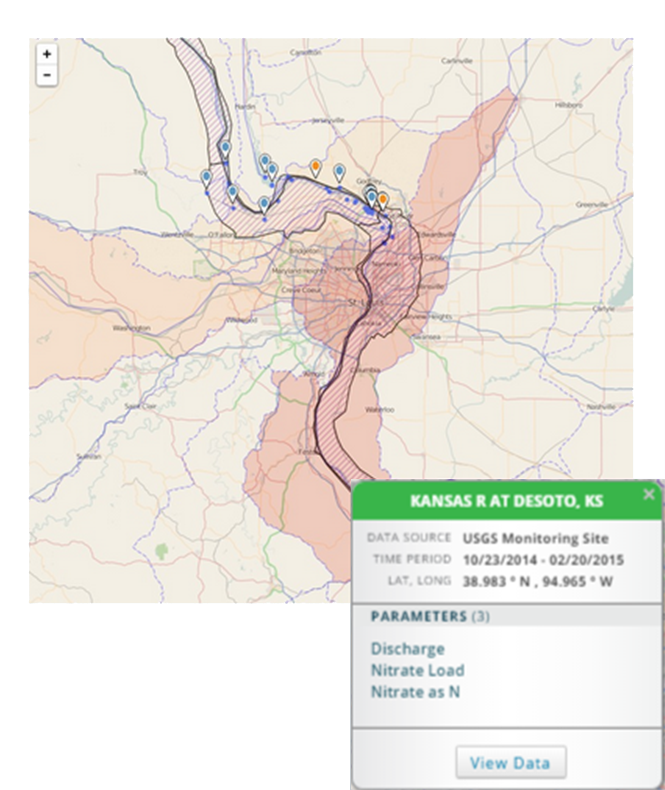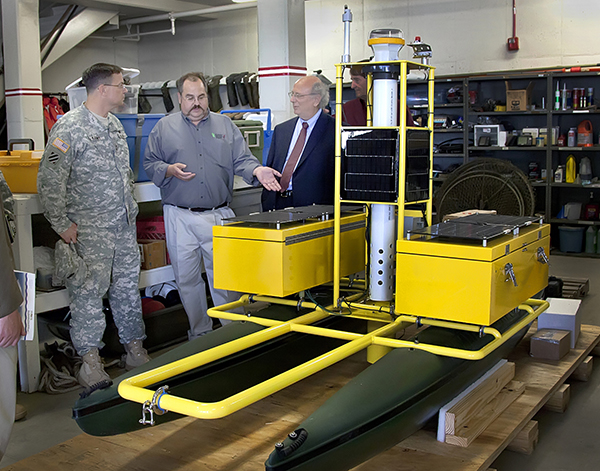The National Great Rivers Research and Education Center (NGRREC℠), Illinois-Indiana Sea Grant, and the National Center for Supercomputing Applications (NCSA) partnered in the development of the Great Lakes to Gulf (GLTG℠) Virtual Observatory. The GLTG℠ Virtual Observatory provides access to water resource information, from the Mississippi River and featured watersheds in the Mississippi River Basin.
.png)
The GLTG℠ virtual observatory makes available current science characterizing nutrient and water quality issues. Through visualizing water quality monitoring data and land-use data across sources and agencies, the virtual observatory provides insight to changes in water quality with a user friendly interface. Tools developed for the GLTG℠ audiences provide customized interface visualizations with dynamic maps of a desired design.

The virtual observatory gathers data from a variety of federal, state, local, and private sources, including near real-time information. The publicly available virtual observatory includes historical and current information about water quality in the rivers, including near real-time data from the Great Rivers Ecological Observatory Network (GREON℠) being implemented by NGRREC℠. The GREON℠ buoys collect data on water temperature, oxygen, conductivity, turbidity, chlorophyll-a, blue-green algae, nitrate and weather information. Learn more.
The GLTG℠ Virtual Observatory is intended for use by scientists, students, land managers, and policy makers in federal, state, and local institutions.

Former U.S. Army Corps of Engineers Major General John W. Peabody, Commander of the Mississippi Valley Division and President of the Mississippi River Commission, toured the Jerry F. Costello Confluence Field Station on Sept. 27, 2012. Peabody (left) discussed the field station's innovative research projects with NGRREC℠ scientists. During the tour, John Chick, former NGRREC℠ director of Aquatic Ecology (center) and Dr. Dale Chapman, former president Lewis and Clark Community College, showed Peabody a real-time water sampling buoy now used to gather GLTG℠ data.